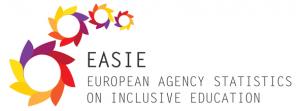The European Agency Statistics on Inclusive Education (EASIE) is EASNIE’s data collection activity. It provides clearly focused data that informs country policy priorities and the European Commission’s strategic objectives on inclusive education, and the implementation of the United Nations’ Sustainable Development Goal (SDG) 4, which requires countries to ensure inclusive and equitable education and promote lifelong learning opportunities for all.
Data is collected by officially nominated data experts in participating EASNIE member countries and is approved by the Representative Board member for that country. Since the 2018/2019 school year, the EASIE data collection has taken place annually. Before that, it took place every two years.
The information is presented in Data Tables, with a background information section for each country. You can access these sections in the menu above.
The EASIE Data Tables provide numeric data relating to:
- All children/learners in inclusive settings or otherwise;
- Children/learners with an official decision of special educational needs (SEN) in inclusive settings or otherwise.
Accompanying descriptive background information linked to the Data Tables describes:
- the forms of recognised education in the country;
- what an ‘inclusive setting’ means in the country;
- what an ‘official decision of SEN’ means in the country;
- what ‘out-of-education’ means in the country;
- other specific issues relating to the country’s data.
For each country you can download a Country Report. These Country Reports (indicator tables) present an agreed set of indicators for inclusive education for each country. The indicators are calculated using the numbers in the Data Tables.
The Data tables section of the EASIE web area presents all available EASIE data for each country since the 2012/2013 school year. Select your country to see the information. The default view is the most recent dataset.
Cross-Country Reports are the collated Country Reports and include indicator tables and visual bar charts for all participating countries. These are produced at the end of each data collection work cycle to give an overview of all the available data.
A Guide provides a brief overview of the EASIE work. It includes the definitions and methodology used, and explains the relationship between questions in the Data Tables and how the indicators are calculated.
Other EASIE materials include reports on out-of-school learners and earlier methodology reports.

